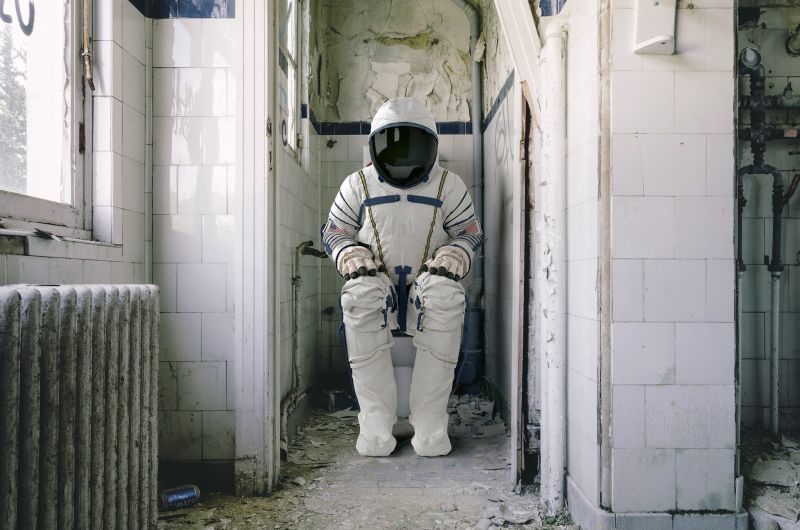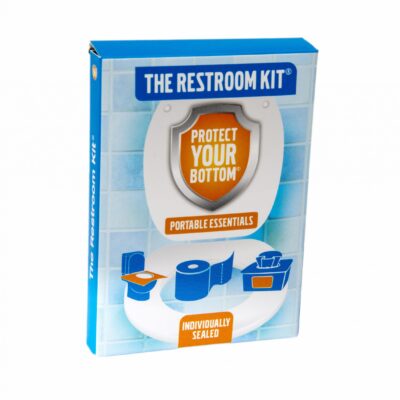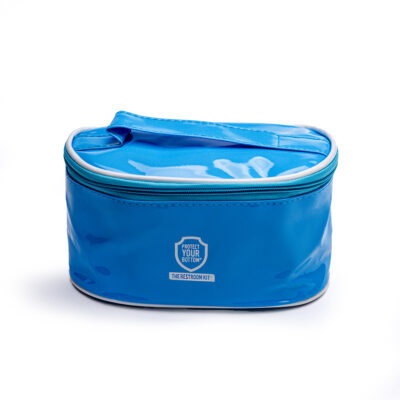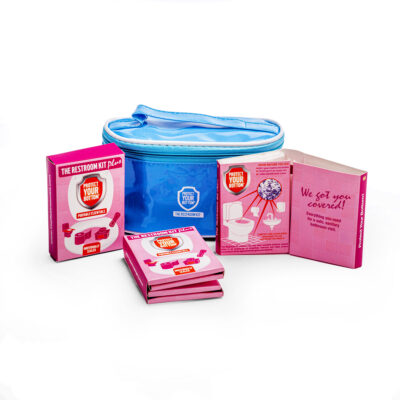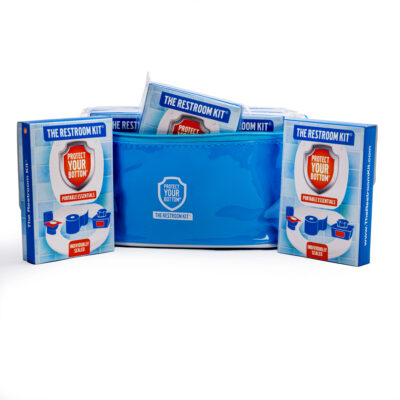Our civilization has certainly come a long way from chamber pots and outhouses. Today we have luxurious and technically advanced toilets that do almost everything for you, including cleaning up. Private and public toilets, and “bathrooms” in general have always been an important aspect of various civilizations and cultures. In one way or another, the public toilet is linked to the health and successful growth of many communities throughout history.
Who Developed the First Toilet?
It’s pretty easy to assume that before toilets, and even before outhouses, that people would just pop a squat in the street and “go” wherever they pleased. While this may have been true for many travelers on the road, most of the customs required people to be much more civilized and respectful, especially in the bustling communities that relied on trade and travel for survival. The recognition of the first toilet goes to the Scots back in 3000 BC. Communal toilets were found in a Neolithic settlement. Much further south, the Greeks of 1700 BC constructed the Palace of Knossos with large clay-like pans connected to a runoff water supply.
Most of the toilets and bathing for the next few millennia were public, and privacy was not a luxury most people enjoyed unless they were a part of the higher classes or lived away from the cities.
Public Toilets and Bath Houses
By 315 AD, the Romans had nearly 150 public toilets. The invention and installation of aqueducts created one of the largest sewage systems the world had seen to date. In Roman culture going to the toilet was a social event – a relaxing time to meet with friends and colleagues, exchange stories and views, and catch up on the latest news. It’s almost like how we spend time looking at social media stories and feeds, and replying to text messages when we’re on the toilet today.
However, even with their advanced systems, their practices were still unhygienic. The Romans would wipe themselves with a piece of sponge fixed to a short wooden handle and rinse it off in a water channel that ran in front of the toilet. The next guest then reused the sponge to wipe and rinse, and so forth. This practice might have led to the starting of the phrase “grab hold of the wrong end of the stick.” This practice was also very bad for public health. Many Romans unknowingly had and spread intestinal parasites like whipworm, roundworm, and bacteria that lead to dysentery, an infection of the intestines causing severe diarrhea with blood and mucus.
Because the spread of germs and parasites was not known to them at the time. Many of the farmers would also use human feces to fertilize their crops. This allowed parasites to get into the food, and further increase the spread.
Lack of Sewage Systems Lead to Stench and Sickness
In Medieval England, the common practice was for people to sit on something that would look like a plant pot today. When they were finished, people would take their chamber pots or “potties” and throw the contents through a door or window into the street. The more high-class folk would use a “garderobe.” A very early style of a bathroom, this room protruded from the rest of the structure, usually above a moat, with an opening for waste. Peasants and servants had to relieve themselves in communal toilets usually towards the outer edges of the towns.
Garderobes seemed to be a good solution for a time, especially when only used by the few rich and elite. However, London decided to construct a huge public garderobe that emptied directly into the River Thames. With the entire population of London relieving themselves into the river, it eventually created a large stench and led to the spread of disease for the entire population.
Eventually, the “potties” took a new form called the “commode”. Resembling the toilets we have today, the design of the commode was a box with a seat and a lid. The box covered a porcelain or copper pot to catch the waste. Royals often hid their commodes behind curtains and used flowers and herbs to disguise the odors.
In the 19th century, the population of Britain increased, but the number of toilets did not. Cities such as London and Manchester were overcrowded, about 100 people might share a single toilet. Sewage quickly spilled into the streets, rivers, and water supply. This led to thousands of citizens dying from water-borne diseases, especially during the cholera outbreaks of the 1830s and 1850s.
In 1848, the English government declared that every new house should have a water-closet or an ash-pit privy. Ashand charcoal would help to soak up the smell and the liquids. “Night soil men” were hired to empty the ash pits regularly. But it wasn’t until 1858 that the government commissioned the building of a system of sewers in London. In 1865 it was finally completed and England saw a spectacular decrease of deaths from cholera, typhoid and other waterborne diseases.
The First Flushing Toilet
There’s a lot of conflicting answers about who first invented the flush toilet. It is a widely-held belief that Thomas Crapper designed the first flush toilet in the 1860s. But many believe it was actually designed 300 years earlier, by Sir John Harrington, godson of Elizabeth I. However, It’s possible that the invention of a flushing toilet is even older than that! Archaeologists in northwest India excavated and revealed 4000-year-old drainage systems which could have been for toilets. Unfortunately, it can’t be known for sure if this was the purpose.
Most would agree that Crapper was the inventor, pulling various ideas from his predecessors. During the 16th century Sir John Harrington created a water closet with a raised collection of water and a small pipe to flush the waste in 1592. Harringotn built one for himself and Queen Elizabeth I; unfortunately, his invention was ignored for almost 200 years.
In 1775, a watchmaker known as Alexander Cummings developed the S-shaped pipe under the toilet basin. He came up with this design to keep out the odors of waste. Then, in 1861, Thomas Crapper was hired by Prince Edward to construct lavatories in several royal palaces.
He patented a number of toilet-related inventions but the modern toilet we know today is a result of the productions of Crapper and his contemporaries, George Jennings, Thomas Twyford, Edward Johns & Henry Doulton.
Modern Times and Public Toilets Can Still Spread Germs
Much of our sanitation culture today is learned from centuries of lessons and improvements. The advancements of toilets and sewage systems also improved hygiene. But we clearly had to learn about the cleanliness of our bodies as well as the environment. For example, proper handwashing was often not a daily practice, even after using the bathroom. In the late 1800s, a large outbreak of Typhoid Fever erupted largely caused by “Typhoid Mary” Mallon. A cook for various elite families, Mallon would “unknowingly” spread typhoid after failing to wash her hands. She infected 51 people, 3 turned into fatalities.
As public restrooms became secondary to private, in-home bathrooms, many were unprepared and unaware of some major health concerns such as mold and bacteria growth.
Although we’ve come a long way in bathroom technology, our poop is still just as dangerous and bacteria-ridden. Even with flushable valves, toilet paper, automatic flushes, and the sealed “vacuum water closet” found on planes, trains, and boats, the population is always at the risk of public restroom germs. In today’s environment, everyone should learn how to have proper precautions in public bathrooms.
The Restroom Kit Is Making History with Hygiene at Public Toilets
The Restroom Kit had traveled far and wide to spread the word about preventing the spread of germs from public bathrooms. While most public bathrooms have washroom essentials available, such as toilet paper, soap, and hand drying stations, much of this is highly contaminated. From improper storage, cleaning, and replenishment. Most toilet paper has splashes of bacteria from the toilet from uncovered flushing. Soap and paper towel dispensers are also points of contact with germs on the surface.
The Restroom Kit is your public restroom survival kit. It contains all of your washroom essentials in a convenient, discreet package that’s germ-free!
Each Restroom Kit comes with 1 yard of toilet paper, an oversized toilet seat cover, a tush wipe, and an antibacterial hand wipe. Each public Restroom Kit is designed for a one-time use. The Restroom Kit comes in two styles: the original Kit, or the Pink Kit, which includes everything in the original, as well as a panty liner for emergency situations.
Practicing proper hygiene and bathroom etiquette, as history has shown, is crucial for our health as well as the growth of our communities. With The Restroom Kit, you never have to worry about using contaminated toilet paper, or empty hand cleaning materials. It’s easy to take on-the-go, and is great for trips to the park or cross-country travel. Order The Restroom Kit for your family, office, roommates and teammates by visiting our website today.

